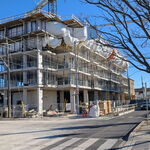First, I wish you would be more measured in your responses. I specifically said in my post that I as not arguing for any specific pair that I listed, but rather a service model under which such services would be evaluated.
I think you are a very knowledgeable poster, but you do let your passion get the better of you, you want to win arguments you aren't even having!
That said, I think you're too quick dismissive of some city pairs. Again, its not that I'm advocating for them, but rather than I think they merit careful study to consider what options may be appropriate; and that there is at least some need to be fulfilled in some manner by public transport (it may well be a bus); but its a need not being met today.
You're quick to look at say Kenora-TBay and think about how small Kenora is; here's what I'm looking at.
Kenora is the hub community for about 70,000 in its area of north-western Ontario; it has the hospital, high school, community college etc. Accordingly it needs to be seen as 70,000.
Second, still being relatively small, many in the community travel for MRIs/Surgeries to eithe TBay or Winnipeg and the province actually provides a travel grant to cover these costs.
This travel pattern also holds for university studies and some employment.
The distance between TBay and Kenora is just over 400km.
The only and only bus trip that comes up takes a whopping 8 hours to traverse that section; clearly not a reasonable travel time, nor competitive w/the car in the least.
This is where examining the alternatives comes in. I'm not suggesting a 5-car loco-hauled VIA train makes sense.
It may be a revised bus route, but it also may make sense to look at 2-car DMU that makes no more than 1 intermediate stop, providing sufficient track speeds are attainable with out excessive capital investment.
The same sort of review is required of a host of different routes that I think you are simply too dismissive of; because you tire of what you see as rail-fan arguments rather that credible analysis.
That is surely fair in many scenarios. But it is equally fair, unless you can correct me on this point, that VIA hasn't studied most of the City-pair routes in any detail, in a generation or more.
Its also true that in that time circumstances have changed (much lower rates of driver's licenses among young people, especially in big cities) and much worse traffic near those same centres, along with deteriorated bus services.
Many of these will doubtless not justify rail, and I wasn't advocating that; merely a well thought out solution, rather than reactionary inaction.




